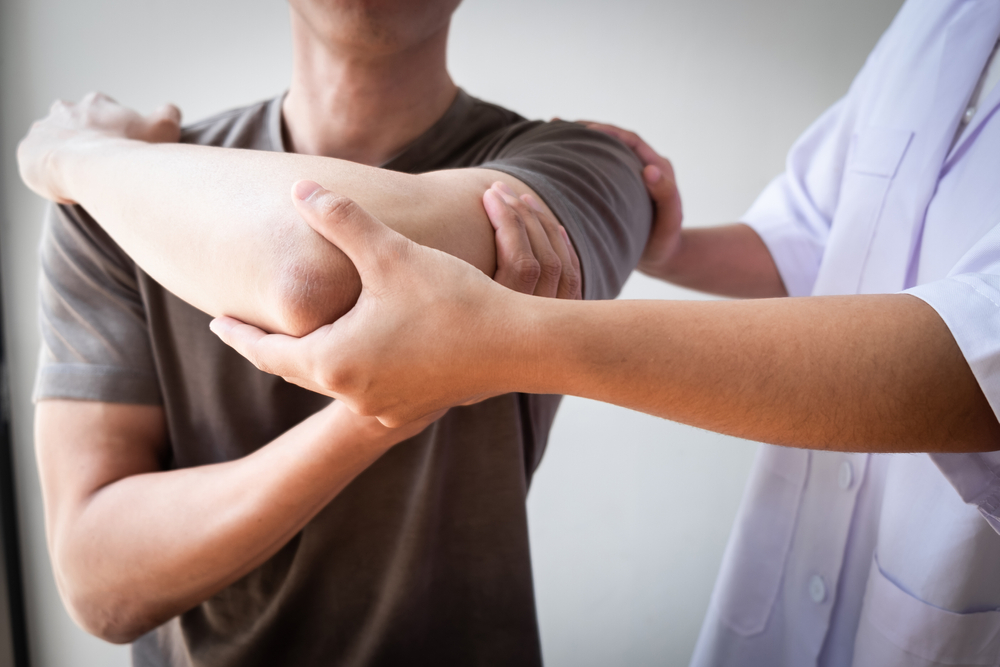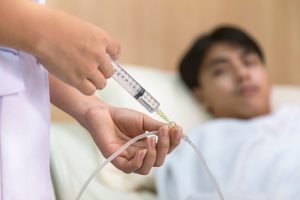A Comprehensive Guide to Navigating Rotator Cuff Tears
Rotator cuff tears, a prevalent ailment, can significantly impair one’s shoulder function and daily life. Understanding the symptoms is the first step, and leveraging modern diagnostic techniques is crucial for accurate identification of the condition. Additionally, adopting evidence-based management strategies is pivotal for effective treatment and recovery. This article delves into the intricacies of rotator cuff anatomy, subsequently highlighting the importance of early diagnosis. Moreover, it explores the evolving landscape of treatment modalities, illustrating how advancements in medical science are paving the way for better patient outcomes.
Recognising Symptoms of Rotator Cuff Tears
The onset of rotator cuff tears is often signalled by a dull ache in the shoulder, difficulties with sleep due to pain, and challenges in performing everyday activities such as combing hair or reaching behind the back. Other symptoms include arm weakness.
The Anatomy and Importance of the Rotator Cuff
The rotator cuff is a crucial group of muscles and tendons encircling the shoulder joint, keeping the head of your upper arm bone firmly within the shallow socket of the shoulder. A rotator cuff injury can cause a dull ache in the shoulder, which often worsens when you try to sleep on the involved side.
The rotator cuff has several important functions:
Stabilisation: It stabilises the shoulder joint, ensuring the smooth movement of the upper arm and shoulder.
Mobility: It aids in lifting and rotating your arm, allowing for a wide range of motion.
Preventing Dislocation: By keeping the head of the upper arm bone securely in its socket, it helps prevent dislocations and other shoulder injuries.
The health of the rotator cuff is vital for the comprehensive function of the shoulder, making its maintenance paramount. Rotator cuff tears are common, especially among populations engaging in repetitive overhead motions during sports or occupational activities.
These tears can significantly impair shoulder function, making early diagnosis and appropriate management essential for restoring mobility and ensuring quality of life.
Physical Examination for Detecting Rotator Cuff Tears
Physical examinations form the foundational step in diagnosing rotator cuff tears. Common tests include:
Drop Arm Test: This test observes the control difficulty when raising the arm overhead and lowering it slowly, which could indicate a tear.
Empty Can Test: The test involves raising the arm to shoulder height, turning the hand downward, and resisting applied pressure.
Imaging Techniques to Diagnose Rotator Cuff Tears
Advanced imaging techniques are indispensable for accurately diagnosing rotator cuff tears, providing a clear depiction of the soft tissues around the shoulder joint. Here are some of the primary imaging modalities used in diagnosing rotator cuff tears:
1. Magnetic Resonance Imaging (MRI)
- Principle: MRI uses magnetic fields and radio waves to generate detailed images of the structures within the body, including the muscles and tendons of the rotator cuff.
- Advancements: Recent advancements in MRI technology, such as higher field strengths and better coil designs, have led to enhanced image quality, aiding in the early diagnosis of partial thickness and full-thickness rotator cuff tears.
- Benefits: MRI provides a comprehensive view of the shoulder anatomy, showing the extent of the tear, the quality of the muscles, and other associated conditions like bursitis or tendonitis.
2. Ultrasonography
- Principle: Ultrasonography employs high-frequency sound waves to produce images of the structures within the body. The echoes from the sound waves form a picture called a sonogram.
- Advancements: With improvements in transducer strength, image resolution, and operator training, ultrasonography has become an excellent alternative for diagnosing rotator cuff tears. The diagnostic accuracy of ultrasonography for full-thickness supraspinatus tears increased from 0.92 to 0.97 when comparing studies published between 2010 and 2015 to those published between 2016 and 202023.
- Benefits: Ultrasonography is a cost-effective, non-invasive, and rapid imaging modality that provides dynamic assessment of the rotator cuff during motion.
3. Arthrography
- Principle: Arthrography involves injecting a contrast medium into the shoulder joint to better visualise the structures during imaging.
- Application: Although it’s a traditional technique, it can be combined with MRI (MR arthrography) or CT (CT arthrography) to enhance the delineation of rotator cuff tears, especially in complex or post-surgical cases.
4. Computed Tomography (CT) Scan
- Principle: CT scans use X-rays to create cross-sectional images of the shoulder, providing a good assessment of bony structures but less detailed information on soft tissues.
- Application: CT scans are typically not the first choice for diagnosing rotator cuff tears due to their lower sensitivity to soft tissue contrasts compared to MRI and ultrasonography.
Each of these imaging techniques has its advantages. The choice of modality often depends on the specific clinical scenario, the suspected pathology, and the patient’s ability to undergo the examination.
MRI remains a benchmark for diagnosing rotator cuff tears. However, continuous advancements in ultrasonography and other imaging technologies are broadening the diagnostic landscape. They offeri more precise and earlier detection of rotator cuff pathology.
Management and Treatment Strategies for Rotator Cuff Tears
The successful management of rotator cuff tears is contingent upon the synthesis of accurate diagnosis and effective treatment strategies.
Conservative Management: Initial treatment typically involves rest, avoiding overhead activities, and the use of non-steroidal anti-inflammatory drugs (NSAIDs) to alleviate pain and inflammation.
Physical therapy exercises aimed at restoring flexibility and strength to the shoulder muscles and tendons are also fundamental.
Surgical Intervention: Surgery may be considered for those with persistent symptoms despite conservative management, significant functional impairment, or in cases of acute, traumatic tears.
Surgical techniques range from arthroscopic tendon repair, open tendon repair, to tendon transfer or shoulder replacement in severe cases.
Post-operative Rehabilitation: Post-operative rehabilitation is crucial for regaining shoulder function, entailing a structured program of physical therapy.
Patients are educated on the importance of adhering to the rehabilitation program, and on gradual return to regular activities to prevent re-tear.
Emerging Treatments: Platelet-rich plasma (PRP) injections, stem cell therapy, and the utilisation of biodegradable scaffolds are being explored for their potential in enhancing rotator cuff healing and reducing the rate of re-tear.
Embracing the Journey: Roadmap to Recovery
The realm of rotator cuff tear management is a blend of diagnosis, tried-and-tested treatments, and novel therapeutic frontiers. The intricacies of rotator cuff anatomy, coupled with the diverse spectrum of treatment modalities, offer hope for individuals grappling with the discomfort and impairment associated with rotator cuff tears.
The journey from recognising the early symptoms of a rotator cuff tear, through the paths of medical management, to the final destination of recovery, symbolises a collaborative venture between patients and healthcare providers.
References
- Plancher, K. D., Shanmugam, J., Briggs, K. K., & Petterson, S. C. (2021, September 13). Diagnosis and Management of Partial Thickness Rotator Cuff Tears: A Comprehensive Review. Journal of the American Academy of Orthopaedic Surgeons; Lippincott Williams & Wilkins. https://doi.org/10.5435/jaaos-d-20-01092
- Weber, S. C., & Chahal, J. (2020, March 1). Management of Rotator Cuff Injuries. Journal of the American Academy of Orthopaedic Surgeons; Lippincott Williams & Wilkins. https://doi.org/10.5435/jaaos-d-19-00463
- Rotator cuff injury – Symptoms and causes – Mayo Clinic. (2023, May 11). Mayo Clinic. https://www.mayoclinic.org/diseases-conditions/rotator-cuff-injury/symptoms-causes/syc-20350225#:~:text=Symptoms%20The%20pain%20associated%20with,term%20shoulder%20pain
- Farooqi, A. S., Lee, A. C., Novikov, D., Kelly, A. M., Li, X., Kelly, J. D., & Parisien, R. L. (2021, October 1). Diagnostic Accuracy of Ultrasonography for Rotator Cuff Tears: A Systematic Review and Meta-analysis. Orthopaedic Journal of Sports Medicine; SAGE Publishing. https://doi.org/10.1177/23259671211035106
- Farooqi, A. S., Lee, A., Novikov, D., Kelly, A. M., Li, X., Kelly, J. D., & Parisien, R. L. (2021, October 1). Diagnostic Accuracy of Ultrasonography for Rotator Cuff Tears: A Systematic Review and Meta-analysis. Orthopaedic Journal of Sports Medicine, 9(10), 232596712110351. https://doi.org/10.1177/23259671211035106
- Weber, S. C., & Chahal, J. (2020, March 1). Management of Rotator Cuff Injuries. Journal of the American Academy of Orthopaedic Surgeons; Lippincott Williams & Wilkins. https://doi.org/10.5435/jaaos-d-19-00463
- Reinholz, A. K., Till, S. E., Arguello, A. M., Barlow, J. D., Okoroha, K. R., & Camp, C. L. (2023, January 1). Advances in the Treatment of Rotator Cuff Tears. Clinics in Sports Medicine; Elsevier BV. https://doi.org/10.1016/j.csm.2022.08.003














